Occupational Safety Training at Lien Chieu Industrial Park
99,000 ₫
Note: The above price is calculated per person and may fluctuate depending on the number of participants in the training course and market conditions. For more accurate pricing information, please refer to the price list or contact our consulting staff directly.
Occupational safety is an important issue at Lien Chieu Industrial Park and needs to be addressed promptly to ensure the health and safety of workers and enhance the reputation of businesses here. The Occupational Safety Training course is one of the effective solutions to raise awareness of accident prevention methods for workers in Lien Chieu Industrial Park.
Table of Contents
Toggle1. Overview of Lien Chieu Industrial Park
a. History of Lien Chieu Industrial Park
Through a long and eventful development journey, Lien Chieu Industrial Park in Da Nang City has witnessed significant growth and transformation in the industrial sector. From a dedicated project, Lien Chieu Industrial Park has become a symbol of success and economic development in the Central Vietnam region.
The journey of Lien Chieu Industrial Park began on April 18, 1998, when the Prime Minister issued Decision No. 344/QĐ-TTg officially establishing the industrial park. With the mission to become a destination for enterprises in the heavy industry sector, the park was entrusted to Construction Company No. 7, later the Central Construction Corporation, to serve as the main investor responsible for building and developing infrastructure.
By August 2004, the Da Nang Industrial Park Infrastructure Development and Exploitation Company took over this important task, ensuring the construction and management of the park’s infrastructure. From June 2006, the park was assigned to Saigon – Da Nang Investment Joint Stock Company for investment and management, marking a significant turning point in the development of Lien Chieu Industrial Park.
With an initial area of 373.5 ha, Lien Chieu Industrial Park underwent planning adjustments to optimize land use and enhance investment attraction. Currently, the park’s planned area is 289.35 ha, reflecting careful spatial planning.

b. Companies within Lien Chieu Industrial Park
Updating
c. Economic potential of Lien Chieu Industrial Park
The strategic location of Lien Chieu Industrial Park has contributed significantly to its development. Bordered to the north by Hai Van Pass, to the south by the Cu De River, to the east by National Highway 1A, and to the west by Phuoc Tuong Mountain, the park enjoys convenient connectivity with surrounding areas. Road, rail, sea, air, and inland waterways form a well-connected network linking key points, including Han River Bridge, Tien Sa Port, Han River Port, Da Nang International Airport, and the city center.
In addition to its unique location, Lien Chieu Industrial Park benefits from the diverse amenities of Da Nang City. As a leading financial center in the Central Highlands region, Da Nang has a rich banking network with 57 branches. Moreover, modern postal infrastructure meets all mailing needs. Reliable healthcare facilities are also nearby, including Da Nang Hospital and Lien Chieu District Health Center.
Lien Chieu Industrial Park promises businesses modern and synchronized infrastructure and utilities. Internal roads are designed wide and easily accessible to each plot. Electricity and clean water supply meet production needs, while advanced wastewater treatment and telecommunications systems ensure continuous and efficient operations.

d. Geographic location of Lien Chieu Industrial Park
View map: here
Location: Hoa Hiep Bac Ward, Lien Chieu District, Da Nang City
- By road: 15 km from Da Nang City Center
- By air: 14 km from Da Nang International Airport
- By rail: 19 km from Da Nang Railway Station
- By sea: 25 km from Tien Sa Port
Total area: 289 ha
2. Overview of Occupational Safety Training at Lien Chieu Industrial Park
a. What is occupational safety training?
- The occupational safety training in Da Nang is an intensive course for workers in industrial, construction, manufacturing, and high-risk sectors. This training is organized by Nam Viet’s professional safety training centers at Lien Chieu Industrial Park.
- Participants are provided with the knowledge and skills necessary to ensure personal and colleague safety. Training topics include labor safety laws and regulations, risk identification and assessment, safety equipment inspection and maintenance, first aid, and emergency handling.
- For businesses, training employees in occupational safety not only enhances workforce efficiency but also ensures compliance with legal safety regulations and minimizes workplace accident risks.
REGISTER FOR OCCUPATIONAL SAFETY TRAINING
b. Training duration
Occupational safety training duration depends on factors such as job type and industry. The exact duration for each group is regulated in Article 19 of Decree 44/2016/ND-CP
- Group 1: 16 hours
- Group 2: 48 hours
- Group 3: 24 hours
- Group 4: 16 hours
- Group 5: 16 hours
- Group 6: 4 hours
c. Training content
Occupational safety training content includes essential knowledge and skills to minimize workplace accidents, ensuring the safety of workers and company assets. Specifically, training may cover:
- Knowledge of labor safety laws and regulations of the government and enterprises.
- Understanding risks and types of workplace accidents.
- Skills in using personal protective equipment and general safety equipment.
- Methods to minimize accident risks and ensure safety during work.
- Emergency handling and rescue organization during workplace accidents.
- Workplace environmental protection knowledge.
Training content can be tailored to specific industries and working conditions.
d. Occupational safety training certificate
Occupational safety and hygiene training certificate
- The certificate format follows Form 08, Appendix II, Decree 44/2016/ND-CP, issued for Groups 1, 2, 5, 6.
- The certificate measures 13 cm x 19 cm, with a sky-blue front cover.

- The front side content is shown above.
- The back has a white background with content as shown below.

- The card format follows Form 06, Appendix II, Decree 44/2016/ND-CP.
- Group 3 workers receive an Occupational Safety Card (commonly called Group 3 Safety Certificate).
- The card measures 60 mm x 90 mm, with front and back content as shown below.

Employers may issue a Group 3 Safety Card to trained employees after passing the assessment and having a labor contract.
- The tracking book format for Groups 1, 2, 5, 6 follows Form 09, Appendix II, Decree 44/2016/ND-CP.
- The tracking book format for Group 3 follows Form 10, Appendix II, Decree 44/2016/ND-CP.
- The tracking book format for Group 4 follows Form 11, Appendix II, Decree 44/2016/ND-CP.
- Group 4 only receives a tracking book without a Group 4 Safety Certificate.
- The content of the Group 4 tracking book is shown below.

3. Employment in Lien Chieu Industrial Park
One advantage of Lien Chieu Industrial Park is its large planned area, facilitating business expansion and development. Currently, the park has attracted nearly 30 domestic and foreign investment projects, with an occupancy rate of 75%. This creates numerous employment opportunities for local workers and attracts talent from surrounding areas.
With diverse industries, the park offers jobs at all levels and skill sets. Heavy industries such as steel rolling, cement, rubber, chemicals, construction materials, and mechanical assembly are thriving. Companies continuously recruit technical staff, production workers, management staff, specialists, and executives.
Lien Chieu Industrial Park not only provides direct employment but also stimulates industrial growth in Da Nang and nearby areas. The presence of companies generates an economic ripple effect, requiring support from auxiliary and service companies, including transportation, maintenance, logistics, and others.
For workers, employment at the park offers stable jobs and a professional working environment with growth potential. Companies invest in workforce training, enhancing skills and career advancement.
Given its significant potential and job opportunities, Lien Chieu Industrial Park is an attractive destination for individuals seeking career growth and personal development. It contributes not only to economic benefits but also to sustainable regional development.
4. Main causes of industrial accidents in industrial parks
The main causes of industrial accidents in industrial parks include:
- Failure to meet safety standards: Some parks do not comply with occupational safety standards or lack personal protective equipment for workers.
- Insufficient employee training: Some workers are not fully trained in occupational safety and do not know how to use protective equipment.
- Lack of safety equipment: Some parks lack safety devices such as ladders, handrails, emergency exits, fire-fighting systems, etc.
- Inadequate supervision: Some parks lack safety supervisors or supervision is insufficient, with irregular inspection of equipment and safety systems.
- Excessive working hours: Workers may work too long without adequate rest, leading to fatigue and mistakes.
- Non-compliance with safety regulations: Some workers fail to follow safety rules or do not wear sufficient protective equipment, leading to accidents.

1. Overview of Lien Chieu Industrial Park
a. History of Lien Chieu Industrial Park
Through a long and eventful development journey, Lien Chieu Industrial Park in Da Nang City has witnessed significant growth and transformation in the industrial sector. From a dedicated project, Lien Chieu Industrial Park has become a symbol of success and economic development in the Central Vietnam region.
The journey of Lien Chieu Industrial Park began on April 18, 1998, when the Prime Minister issued Decision No. 344/QĐ-TTg officially establishing the industrial park. With the mission to become a destination for enterprises in the heavy industry sector, the park was entrusted to Construction Company No. 7, later the Central Construction Corporation, to serve as the main investor responsible for building and developing infrastructure.
By August 2004, the Da Nang Industrial Park Infrastructure Development and Exploitation Company took over this important task, ensuring the construction and management of the park’s infrastructure. From June 2006, the park was assigned to Saigon – Da Nang Investment Joint Stock Company for investment and management, marking a significant turning point in the development of Lien Chieu Industrial Park.
With an initial area of 373.5 ha, Lien Chieu Industrial Park underwent planning adjustments to optimize land use and enhance investment attraction. Currently, the park’s planned area is 289.35 ha, reflecting careful spatial planning.

b. Companies within Lien Chieu Industrial Park
Updating
c. Economic potential of Lien Chieu Industrial Park
The strategic location of Lien Chieu Industrial Park has contributed significantly to its development. Bordered to the north by Hai Van Pass, to the south by the Cu De River, to the east by National Highway 1A, and to the west by Phuoc Tuong Mountain, the park enjoys convenient connectivity with surrounding areas. Road, rail, sea, air, and inland waterways form a well-connected network linking key points, including Han River Bridge, Tien Sa Port, Han River Port, Da Nang International Airport, and the city center.
In addition to its unique location, Lien Chieu Industrial Park benefits from the diverse amenities of Da Nang City. As a leading financial center in the Central Highlands region, Da Nang has a rich banking network with 57 branches. Moreover, modern postal infrastructure meets all mailing needs. Reliable healthcare facilities are also nearby, including Da Nang Hospital and Lien Chieu District Health Center.
Lien Chieu Industrial Park promises businesses modern and synchronized infrastructure and utilities. Internal roads are designed wide and easily accessible to each plot. Electricity and clean water supply meet production needs, while advanced wastewater treatment and telecommunications systems ensure continuous and efficient operations.

d. Geographic location of Lien Chieu Industrial Park
View map: here
Location: Hoa Hiep Bac Ward, Lien Chieu District, Da Nang City
- By road: 15 km from Da Nang City Center
- By air: 14 km from Da Nang International Airport
- By rail: 19 km from Da Nang Railway Station
- By sea: 25 km from Tien Sa Port
Total area: 289 ha
2. Overview of Occupational Safety Training at Lien Chieu Industrial Park
a. What is occupational safety training?
- The occupational safety training in Da Nang is an intensive course for workers in industrial, construction, manufacturing, and high-risk sectors. This training is organized by Nam Viet’s professional safety training centers at Lien Chieu Industrial Park.
- Participants are provided with the knowledge and skills necessary to ensure personal and colleague safety. Training topics include labor safety laws and regulations, risk identification and assessment, safety equipment inspection and maintenance, first aid, and emergency handling.
- For businesses, training employees in occupational safety not only enhances workforce efficiency but also ensures compliance with legal safety regulations and minimizes workplace accident risks.
REGISTER FOR OCCUPATIONAL SAFETY TRAINING
b. Training duration
Occupational safety training duration depends on factors such as job type and industry. The exact duration for each group is regulated in Article 19 of Decree 44/2016/ND-CP
- Group 1: 16 hours
- Group 2: 48 hours
- Group 3: 24 hours
- Group 4: 16 hours
- Group 5: 16 hours
- Group 6: 4 hours
c. Training content
Occupational safety training content includes essential knowledge and skills to minimize workplace accidents, ensuring the safety of workers and company assets. Specifically, training may cover:
- Knowledge of labor safety laws and regulations of the government and enterprises.
- Understanding risks and types of workplace accidents.
- Skills in using personal protective equipment and general safety equipment.
- Methods to minimize accident risks and ensure safety during work.
- Emergency handling and rescue organization during workplace accidents.
- Workplace environmental protection knowledge.
Training content can be tailored to specific industries and working conditions.
d. Occupational safety training certificate
Occupational safety and hygiene training certificate
- The certificate format follows Form 08, Appendix II, Decree 44/2016/ND-CP, issued for Groups 1, 2, 5, 6.
- The certificate measures 13 cm x 19 cm, with a sky-blue front cover.

- The front side content is shown above.
- The back has a white background with content as shown below.

- The card format follows Form 06, Appendix II, Decree 44/2016/ND-CP.
- Group 3 workers receive an Occupational Safety Card (commonly called Group 3 Safety Certificate).
- The card measures 60 mm x 90 mm, with front and back content as shown below.

Employers may issue a Group 3 Safety Card to trained employees after passing the assessment and having a labor contract.
- The tracking book format for Groups 1, 2, 5, 6 follows Form 09, Appendix II, Decree 44/2016/ND-CP.
- The tracking book format for Group 3 follows Form 10, Appendix II, Decree 44/2016/ND-CP.
- The tracking book format for Group 4 follows Form 11, Appendix II, Decree 44/2016/ND-CP.
- Group 4 only receives a tracking book without a Group 4 Safety Certificate.
- The content of the Group 4 tracking book is shown below.

3. Employment in Lien Chieu Industrial Park
One advantage of Lien Chieu Industrial Park is its large planned area, facilitating business expansion and development. Currently, the park has attracted nearly 30 domestic and foreign investment projects, with an occupancy rate of 75%. This creates numerous employment opportunities for local workers and attracts talent from surrounding areas.
With diverse industries, the park offers jobs at all levels and skill sets. Heavy industries such as steel rolling, cement, rubber, chemicals, construction materials, and mechanical assembly are thriving. Companies continuously recruit technical staff, production workers, management staff, specialists, and executives.
Lien Chieu Industrial Park not only provides direct employment but also stimulates industrial growth in Da Nang and nearby areas. The presence of companies generates an economic ripple effect, requiring support from auxiliary and service companies, including transportation, maintenance, logistics, and others.
For workers, employment at the park offers stable jobs and a professional working environment with growth potential. Companies invest in workforce training, enhancing skills and career advancement.
Given its significant potential and job opportunities, Lien Chieu Industrial Park is an attractive destination for individuals seeking career growth and personal development. It contributes not only to economic benefits but also to sustainable regional development.
4. Main causes of industrial accidents in industrial parks
The main causes of industrial accidents in industrial parks include:
- Failure to meet safety standards: Some parks do not comply with occupational safety standards or lack personal protective equipment for workers.
- Insufficient employee training: Some workers are not fully trained in occupational safety and do not know how to use protective equipment.
- Lack of safety equipment: Some parks lack safety devices such as ladders, handrails, emergency exits, fire-fighting systems, etc.
- Inadequate supervision: Some parks lack safety supervisors or supervision is insufficient, with irregular inspection of equipment and safety systems.
- Excessive working hours: Workers may work too long without adequate rest, leading to fatigue and mistakes.
- Non-compliance with safety regulations: Some workers fail to follow safety rules or do not wear sufficient protective equipment, leading to accidents.

1 review for Occupational Safety Training at Lien Chieu Industrial Park
No comments yet

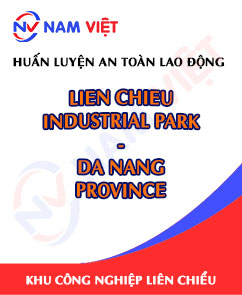
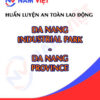
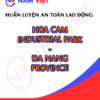

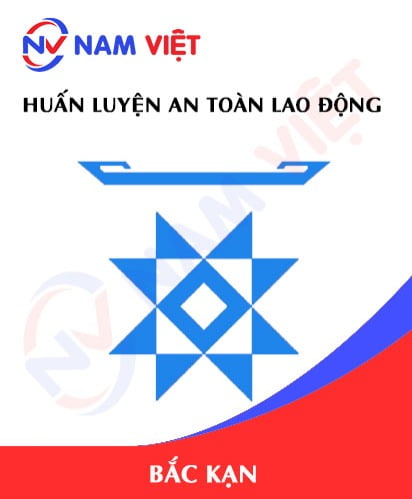
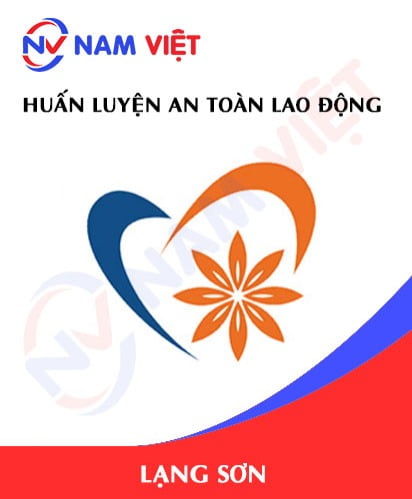
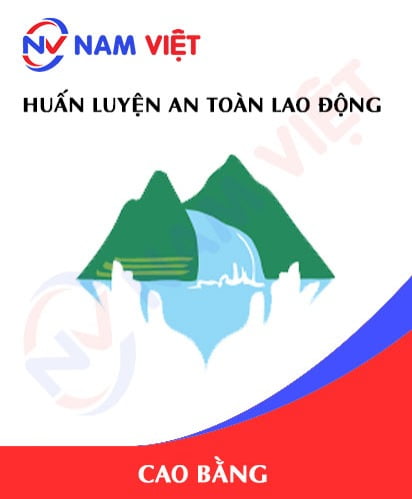
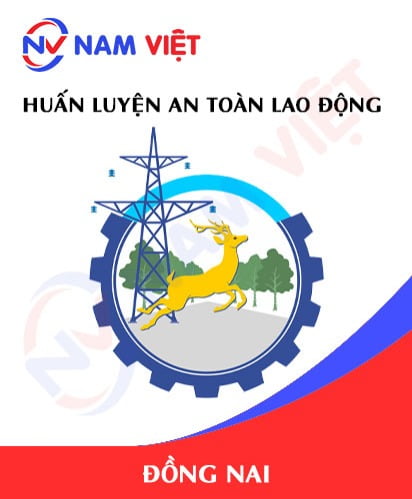
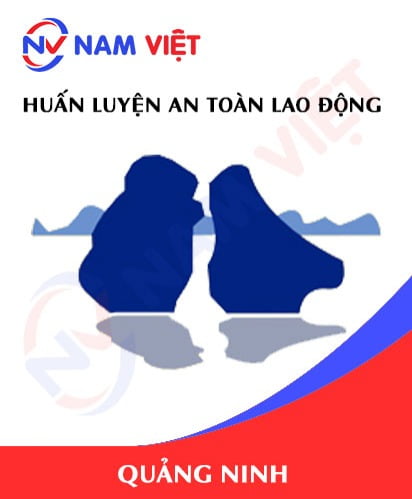
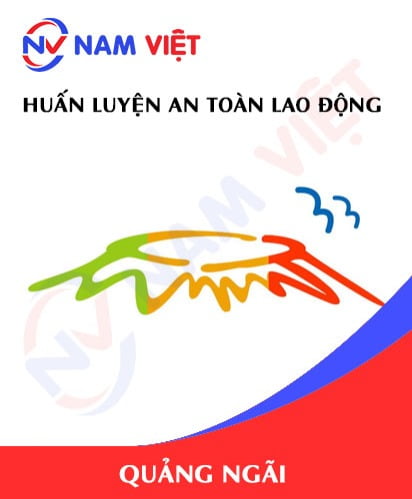
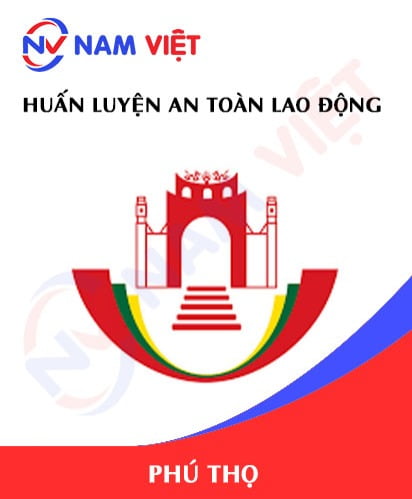
phanminhhang341
Đơn vị đào tạo an toàn uy tín